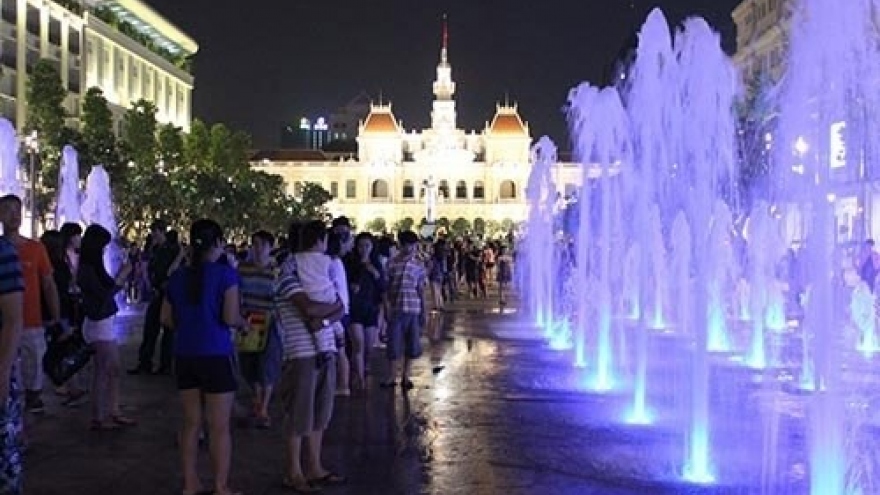Pedestrian streets around Hoan Kiem Lake: a 20 year-old idea
In early October, all streets around Hoan Kiem Lake (or Sword Lake) in Hanoi will become pedestrian streets at weekend evenings during the trial period which will last until the 2017 Lunar New Year Holiday.
 |
The movement will be the start of a plan for promoting the value of Hoan Kiem Lake’s cultural space that was discussed long time ago.
20 years in planning
In August 1996, the Ministry of Construction issued Decision No.448 on forming a plan for preserving and restoring the area around Hoan Kiem Lake and its vicinity.
Under the decision, streets around the lake, also including Trang Tien street, will gradually be used to serve pedestrians in the future.
In order to ensure transport links, a short street will be opened to connect Hang Dau and Nguyen Huu Huan streets; meanwhile numerous parking places will also be formed around the area.
In 2007, a contest was held on planning and designing spaces for Sword Lake and its vicinity, both two second prize winning projects (a first prize was not awarded) emphasised the necessity of forming a pedestrian space around the lake in creating its unique value.
“Dinh Tien Hoang, Le Thai To and Hang Khay streets are too large and attract a huge traffic flow. Due to the heavy flow of traffic, pedestrians around the lake cannot find peace in mind to contemplate the lake and meditate”, said architect Hoang Thuc Hao, the owner of a wining project.
From 2004 to 2014, numerous streets in Hanoi’s Old Quarter, including Hang Ngang, Hang Dao, Ta Hien and Dao Duy Tu, were shut off to traffic at weekends’ nights, as a preparation for connecting the pedestrian space around Hoan Kiem Lake in the future.
In addition, the idea on forming pedestrian streets around the lake every Saturday and Sunday (instead of nights on Friday, Saturday and Sunday) was mentioned in 2011; however it could not be implemented.
According to architect Tran Huy Anh, there will be many difficulties as more pedestrian streets are opened in the centre.
First step
Certainly, opening pedestrian streets around Hoan Kiem Lake and its vicinity at weekends is only a step in implementing the plan set out by planners as well as historical and heritage researchers in order to make the streets around the lake become a space for pedestrians, being worthy of its position of cultural and historical highlight of the capital.
However, the 10 pedestrian streets to be opened simultaneously in early October will face challenges including traffic congestion around the area. Banning vehicles in Dinh Tien Hoang, Hang Khay and Le Thai To streets that play the role of a major radial traffic axis of Hanoi, will certainly put strong pressure on streets nearby.
Moreover, it will take a long time to complete the metro route through and to the area, so the raised question was how to visitors come to Hoan Kiem Lake and where they have to park their individual vehicles such as cars.
As architect Hoang Thuc Hao said, it is not easy to build a multi-storey car park. In addition, it is essential for management agencies to select service and products imbued with Vietnamese cultural identities to display and purchase at pedestrian streets.
Hao proposed that Dinh Tien Hoang street be reduced from 20 metres to eight metres by enlarging the sidewalks and planting more trees near the lake.
As the traffic pressure is eased, the street will gradually become the central axis of the pedestrian space, only serving freight cars and fire trucks as needed.
According to suggestion of architect Tran Huy Anh, Dinh Le and Nguyen Xi streets have many potential factors to become pedestrian streets including serving few vehicles and attracting a large number of visitors to read and buy books.
Firstly, the pedestrian space at the two streets should be organised well in order to impress visitors and attract them to other streets.
Anh also noted, “Mentioning difficulties will help us understand that we should be patient in dealing with pressing problems in the future in order to the pedestrian space around Sword Lake".


